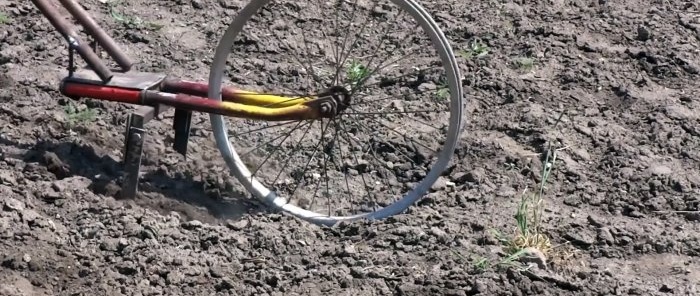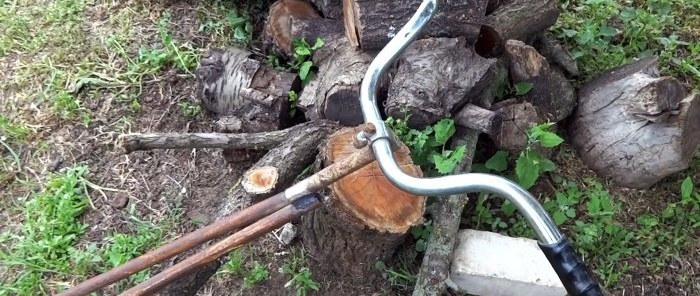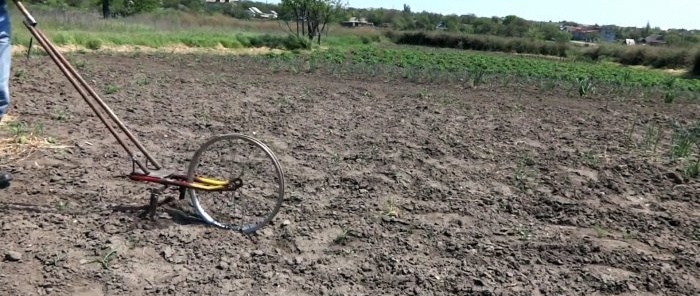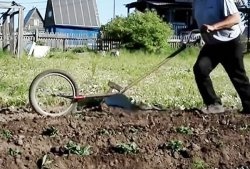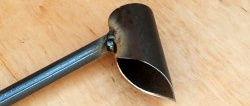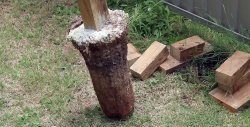To care for plantings of potatoes, tomatoes, onions and other vegetables, you can make a manual cultivator. It loosens and weeds out weeds from rows many times faster than can be done with a hoe. By sacrificing an old bicycle to make it, you can assemble a hand-held cultivator in just a couple of hours.
Materials:
- old bicycle;
- profile pipe 20x20 mm;
- 1/2 inch tube;
- Sheet steel;
- strip 30 mm;
- reinforcement 8 mm;
- saw blade from a circular saw.
Cultivator manufacturing process
For this homemade bicycle, a front wheel with a radius of 210 mm, a fork and a handlebar are used. The rod of the fork is cut off, and a sheet steel platform is welded onto it. 2 pipes are welded to the plate itself at an angle to secure the steering wheel. Their length is adjusted to the height of the person who will use the cultivator. To hold the pipes tighter, you need to make spacers from reinforcement underneath them. At the top, the pipes are brought together and a bicycle handlebar is welded to them.
The working knife of the cultivator is made V-shaped. For it you need to cut 2 plates from a circular disk.
Instead of a disk, you can use another hot metal. The edges of the strips are cut at an angle, then welded together into a V-shaped knife. A small reinforcing plate is welded on top at their junction. The knife is sharpened on one side at the top.
Next, a U-shaped frame is welded onto the knife. On top it is made from a profile pipe with corners welded at the edges.
The legs of the knife itself are cut from the strip. This will allow you to bolt them to the corner. In the future, if necessary, it will be possible to make other holes and change the depth of the bipod into the soil. The blade on the frame should be positioned with a slight downward slope of the nose. The resulting bipod height should be 200 mm. If a wheel of a different size is used, the height is adjusted. The bipod is welded to the fork at a distance of 300 mm from the wheel axis.
The width of the cultivator's bipod is such that it fits between the rows without catching the stems. Optimal would be 240-250 mm. This will allow you to weed and loosen the soil in one pass in beds with onions, carrots, beets, and garlic. The potato row spacing is wider, so the cultivator will have to walk in 2 tracks, first under one row, then moving to the second. You can also process pumpkins, zucchini and cucumbers by weeding the area in strips.
